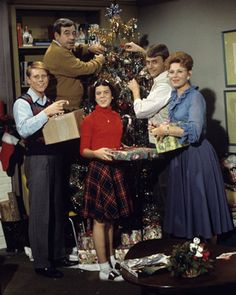It’s 1984 and “déjà vu all over again,” to borrow a famous line and malapropism from baseball legend Yogi Berra. Or at least it seems that way when I log-in to Netflix, the streaming service I’ve watched all or part of several television series on since I dropped the cable television portion of my Shaw Communications package July 7, using my remaining internet service in part for Netflix.
My anecdotal observation is there’s a lot of life-in-the-1980s, fictional and non-fictional programing, here in the waning years of the 2010s. Which is kind of interesting because it occurred to me when we really were living in the 1980s, a lot of that television programing, quaintly produced at the end of the pre-internet age and broadcast on television networks apparently known as CBS, NBC and ABC, was Ronald Reagan era nostalgia for the 1950s.
Happy Days, an 11-season American television sitcom created by Garry Marshall, and starring Ron Howard as teenager Richie Cunningham, Henry Winkler as his friend Arthur “Fonzie”/”The Fonz” Fonzarelli, and Tom Bosley and Marion Ross as Richie’s parents, Howard and Marion Cunningham, depicted an idealized vision of Midwest life from 1955 to 1965 in Milwaukee, Wisconsin and ran on ABC from Jan. 15, 1974, to Sept. 24, 1984, making it a twofer for both decades depicted and produced in. Happy Days also went onto to become one of the biggest hits in television history and heavily influenced the television style of its era.
While I don’t find the current crop of 2010s television productions quite as nostalgic for the 1980s, as was the 1970s and 1980s’ productions for the 1950s, the 1980s remains very much at the centre of these 2010s productions, even if the lens is not necessarily nostalgia. Although sometimes it is.
Stranger Things, the widely-acclaimed Netflix original American science fiction-horror web television series, which first aired July 15, 2016, and was set last year in late 1983, and soon will be moving into 1984, unfolds in the fictional town of Hawkins, Indiana. It is a prime example of the 2010s-as-1980s time genre, where in the words of Jessica Mesman Griffith it “is carefully designed to evoke the emotional life of the early ’80s kid – a burgeoning jaded idealism that defines the last cohort of generation X (http://www.uscatholic.org/articles/201610/familiar-things-30755).) Casey Cole, a vowed religious in the Order of Friars Minor, commonly known as “the Franciscans,” has written (https://breakinginthehabit.org/2017/02/06/stranger-things-and-catholic-nostalgia/) that “among the most compelling aspects of this science-fiction mystery was its creative use of 1980s allusions. Set in 1983 and filled with references to E.T., The Goonies, Stand By Me, The Thing, Alien, Carrie, Close Encounters of the Third Kind, Star Wars, The Evil Dead, Jaws, A Nightmare on Elm Street, Poltergeist, and Predator (among others, not to mention the music!), one might be led to believe that it was written by Stephen King and directed by Stephen Spielberg. It felt that familiar.”
Winona Ryder, 45, who actually acted in the late 1980s in movies such as Heathers, but is even better known for her iconic work in the 1990s in such movies as Edward Scissorhands, Dracula, Alien: Resurrection, Celebrity and Girl, Interrupted, is note-perfect as Joyce Byers, mother of 12-year-old Will Byers, and his older brother, Jonathan Byers, 17. On the night of Nov. 6th, 1983, Will was abducted by a monster, nicknamed the Demogorgon, and taken into an alternate dimension known as the Upside Down.
Just give me some of English punk rock band The Clash’s 1982 “Should I Stay or Should I Go,” along with some colourful blinking Christmas lights memes, and I’ll be set to go for season two on Friday, Oct. 27.
And if that doesn’t give me enough 1980s in the 2010s, well, there’s always AMC’s Halt and Catch Fire (in computer engineering, “Halt and Catch Fire,” known by the assembly mnemonic HCF, is an idiom referring to a computer machine code instruction that causes the computer’s central processing unit (CPU) to cease meaningful operation, typically requiring a restart of the computer), an American period drama available on Netflix that takes place over a 10-year-period, depicting a fictionalized insider’s view of the personal computer revolution of the 1980s, and later the growth of the World Wide Web (WWW) in the early 1990s, which debuted in 2014 and began its fourth and final season last month.
You can also follow me on Twitter at: https://twitter.com/jwbarker22

